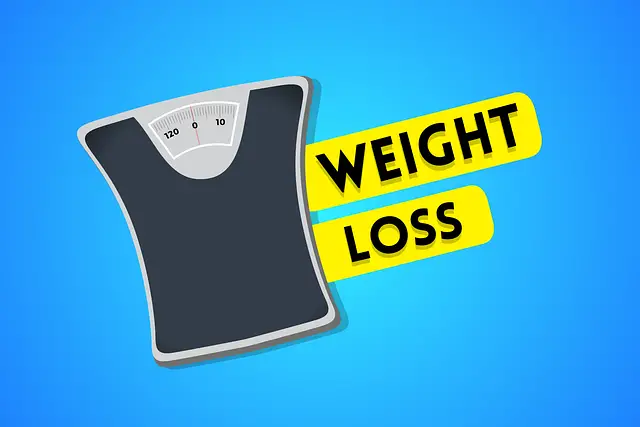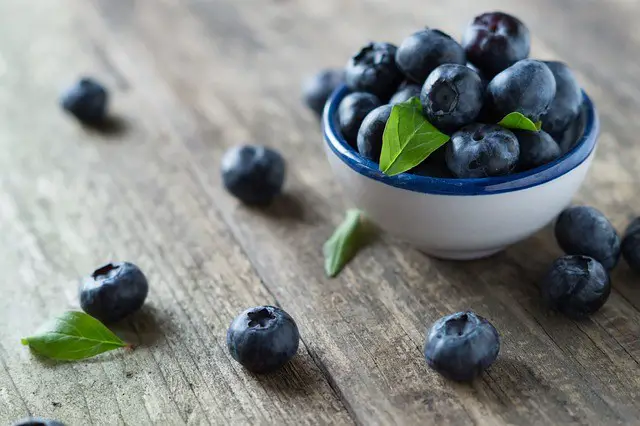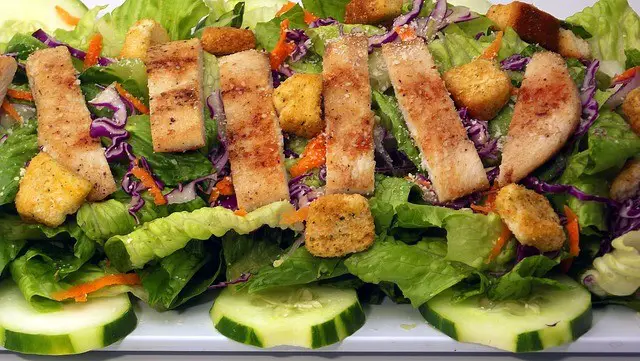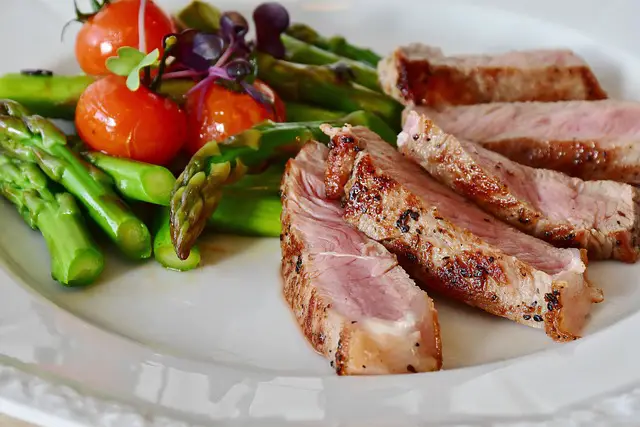Healthy low-carb diets or a ketogenic diet can be exactly what you’re looking for in your weight loss journey. Diet, paired with increased activity levels, will ensure a healthy weight loss towards your goal. But how does the rate of losing weight work?
The rate at which you lose weight is dependent on your physical activity levels, body composition, age, and gender. The heavier you are the more weight you will lose. If you throw a good exercise routine into the ring, plus lower calorie intake, you are more likely to shed off pounds than those dieting on a sedentary lifestyle.
However, it gets to a point where the fast shedding of pounds you experience turns to stable weight loss until it gets to a point where the scale just won’t budge. No matter your weight loss efforts, it seems like you have hit a dead end.
Worry not! Today’s read is going to address this. We will be looking at what a weight loss standstill is, why it happens, tips on how to avoid weight gain at this point, and ways to jumpstart your weight loss to get it back on track toward your ideal weight. I will provide you with tips for modifying your diet to get the perfect plateau break diet for you.
The Plateau Break Diet for Weight Loss Standstill
Most people diligently follow their weight loss diet, especially after experiencing some desired changes. Your current weight is lower than where you started, but you have quite a distance from your goal weight. But now, you are in the dreaded weight loss plateau!
First and foremost, what is this term, and what causes you to get to this point?
Plateau at Weight Loss: What Is It and What Causes It?
It is also referred to as a weight loss stall. In simple terms, it is a point in time when you are not losing any weight, despite your weight loss efforts. At the start of your weight loss journey, you experience steady weight loss at a very fast rate. This is due to lower carb intake and caloric intake that translates to a depletion of glycogen stores.
Glycogen holds on to water, so depleting your stores leads to loss of water. Simply put, the many pounds you’ve lost at the start of your diet are not due to fat loss but to loss of water weight. So, don’t quit just yet!
After this period, you experience stable weight loss where you are losing more than just water weight. At a certain point your scale weight isn’t reducing, and experiencing continued weight loss becomes a nightmare. What exactly causes this?
Causes of Your Stall
This is why you are not losing any weight:
- Water retention
- You are not getting enough hours of sleep
- You’re stressed and producing the stress hormone cortisol
- You’ve reached your body’s happy weight or set point weight
- You have strayed away from healthy dietary choices
- Slower metabolic rate since you need fewer calories at your current weight
- You’re losing fat and gaining lean mass
- Small muscle mass loss that slows down your metabolic health
- Hormonal changes e.g., menstruation
- Higher calorie intake than you need for weight loss
You need a calorie deficit to ensure that you shed a few pounds. Healthcare providers always advise revisiting your caloric intake after shedding a bit of weight. This is because your current calories may have brought some loss in weight, but they are what you need to maintain your new, lower weight.
Reducing weight can cause you to lose some muscle mass which will slow down your metabolism. At times, you do not need to change your body’s composition anymore. This stall could be your body’s way of telling you that it has reached its goal weight and it’s in the perfect physical and mental state. This is what we call “happy weight”.
How can you tell you have reached your body’s set point weight?
- Are you still on a healthy diet and not losing weight?
- Do you still follow your exercise plan?
- Do you get hungry at the “right” points of the day?
- Are you eating to your fill without it affecting your weight?
- How are your energy levels?
If your answers to these questions are yes, then your body is in its happy place! Being weight stable for a while doesn’t always mean going hunting for the perfect diet or subscribing to a more intense exercise regimen. You are at optimum mental and metabolic health.
How do you know you are in a weight loss stall and not your happy place?
Signs of Weight Loss Plateau
- No weight loss for more than three weeks.
- Lethargy and fatigue even after getting adequate sleep.
- You don’t get hungry because your brain isn’t recognizing your body’s hunger signals.
- You get sick frequently. This is because of insufficient nutrients. You can catch a cold or just “feel sick”.
- Eating can be painful. You may feel discomfort during mealtime because your digestive muscles are adapted to going for long without food.
If you notice any of these signs, in addition to no weight loss after a period of stable loss, then you are experiencing a weight loss stall. No weight loss after a period of significant loss is not considered a plateau.
How to Break Weight Loss Plateau
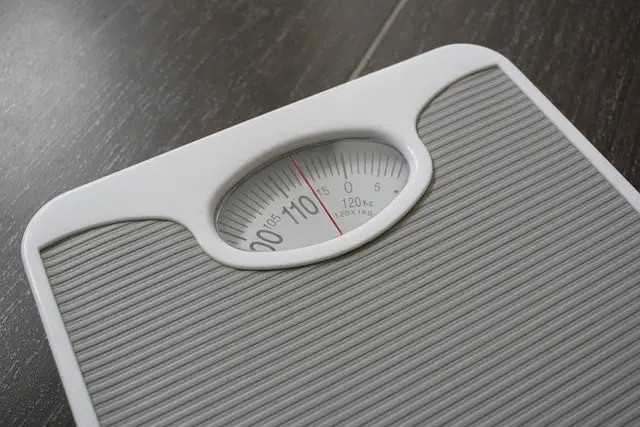
What if your body’s not in its happy place? Is your weight loss plateau being caused by other factors? If this is the case, then there are a few tips to help you get out of your weight-stable state.
Break Weight Loss Plateau: Tips and Strategies
Here’s how to go about it:
Consider Clean Keto
If you are not already eating low carb, consider switching to keto. This diet restricts your carb intake to 20-50 g per day. You will limit your food intake to non-starchy vegetables, high-quality animal proteins, healthy fats and oils, nuts and seeds, and high-fat dairy products.
Research has shown that individuals on the ketogenic diet lose more weight than people on other weight-loss diets. This is because they promote the burning of body fat through ketosis. You can experience overall health improvements on this diet besides losing weight.
Monitor Your Food Intake
I earlier mentioned the relevance of reviewing your caloric intake based on your weight changes. Sometimes it may seem like you’re consuming just the right number of calories to create a deficit for weight reduction. However, if you have been weight stable for a period of time, you may be eating more than you think.
One study done on obese individuals showed that they were consuming double their expected caloric intake without their knowledge. A calorie surplus is often converted to body fat for storage leading to increased weight gain.
You have to ensure you track your macros (carbs, protein, and fat) so you can know how much you’re consuming. Avoid crash diets or yo-yo diets that promise you quick results over a short period of time. Crash diets usually have you limiting calorie intake to below 1200 kcals a day, which is unhealthy. They also increase the risks of developing eating disorders. Be careful as you monitor your food intake not to compromise quality over quantity.
Increase Physical Activity and Intensity
The more weight you lose the slower your metabolic rate. This means you use less calories and burn less body fat. A good way to increase your energy expenditure is by increasing your physical activity or intensifying your current workout plan.
Some exercises, combined with your plateau break diet have been shown to increase the rate of losing weight. A study done on obese women following a low-carb diet and weightlifting for 20 minutes every day showed that they lost 5.9 kgs (13 pounds) and 5 cm (2 in) from their waistline.
For beginners, weigh your options between running or walking as your aerobic activity of choice. You can also consider the elliptical 30 minutes a day in your routine.
Low-carb dieters who have experience with keto and exercise can pick high-intensity interval training, weightlifting, resistance training, or strength training over low-intensity aerobics.
Increase Protein Intake
You have been weight stable for a while now thanks to a slower metabolism caused by loss of muscle mass. Proteins can help to increase your metabolic rate than other macros. Ask me how!
The thermic effect of food refers to the energy needed for digestion and absorption of food, and it makes up 10% of your energy expenditure. Proteins have a higher thermic effect than fats and carbs. This means upping your protein consumption will boost metabolism.
Proteins will increase energy expenditure by 20-30%. This study compared the energy cost of meal-induced thermogenesis on a high-protein, low-fat diet vs a high-carb, low-fat diet. Healthy women were provided with diets that got 15% and 30% of their calories from protein. On the day protein consumption was higher, they experienced a metabolic rate that was higher by twofold. Metabolic health markers are higher on high-protein diets.
An average adult should consume 20 grams of protein per meal to increase metabolic rate and preserve muscle mass during weight loss. However, a point to note is that excessive consumption of protein can elongate time to a fat-burning state. This is because of gluconeogenesis, the process by which your body breaks non-carbohydrate substrates like proteins for energy in the absence of glucose. Do not rush for crash diets that exceed your recommended protein intake.
Go for animal-based protein over plant-based protein because they have a lower carb count. They are also a source of complete proteins, meaning they will provide your body with the amino acids it cannot produce, and should get from your diet. These foods are usually on top of your grams of protein in food chart.
Try Intermittent Fasting
The science of fasting shows that you need between 16-24 hours to achieve a fat-burning state. Intermittent fasting can be good for weight loss. Pairing it with a low-carb diet will see you experiencing more health improvements.
Intermittent fasting plus keto is known as the fast keto diet. It is a healthy diet that takes advantage of the fat-burning benefits of keto and the autophagy benefits of IF, giving you the best of both worlds.
Alternate-Day fasting a type of IF, has been proven to be more effective for weight loss than daily calorie restriction. This review showed that IF can lead to a 3-8% weight reduction and a 3-7% reduction in one’s waistline. Other studies have also shown that IF is better for maintaining muscle integrity during weight reduction than daily calorie restriction.
Stay Hydrated
At the risk of sounding like a broken record, please stay hydrated! You can do this by drinking water, coffee, or tea. Getting out of the dreaded weight loss plateau can be as easy as getting your recommended 8 glasses of water a day.
One research suggests that drinking 500 ml of water increases metabolic rate by 30%. Checking metabolic health markers, in men’s lipids provided the energy for the increased energy demands. On the other hand, in women, carbs were used as the main energy source. Drinking your 2L of water a day will increase energy demands by 400 kJ.
If it’s not easy for you to drink water, consider an aerobic activity during the day like climbing stairs to increase hydration demands. The thermogenic effect of water should be considered when estimating energy expenditure to get you out of the weight-stable state you are stuck in.
Water isn’t the only way you can stay hydrated. Consider fluids like tea and coffee with caffeine that have been shown to increase fat burning in lean individuals by 13%.
Most people are curious and quick to ask, which are healthy teas for weight loss? Green tea, black tea, oolong tea, white tea, Pu’er tea, herbal teas, hibiscus tea, and chamomile tea can be used together with a healthy diet for weight management.
Keep Stress at Bay

The “perfect diet” may not help you lose weight if your stress levels are through the roof. Do you notice how you run to food for comfort or your cravings skyrocket when something is eating you up? It is difficult to stick to a healthy diet when all you can think about is a bowl of ice cream to make you feel good!
Stress increases your levels of cortisol, a stress hormone. Cortisol, especially in women, has been proven to increase abdominal fat storage and levels of circulating insulin. This means proper stress management can help you lose those stubborn pounds you’ve struggled with for a while.
Crash diets may offer quick dietary fixes for your weight stable phase, but if stress is the cause of your weight loss stall, then you’re not doing much. One pilot study showed that obese and overweight women enrolled in an 8-week stress management program lost 4.4 kgs (9 pounds) through muscle relaxation and deep breathing exercises.
Yoga, an aerobic activity, is effective for weight management. Besides your mind’s improved health, your metabolic health will be boosted since it is also a form of exercise.
Another way you can keep stress away is by talking to someone, whether it’s through seeking professional help or by talking to a friend. Give your best friend a call and get the latest neighborhood gossip. Tell your therapist the root source of your stress and it may help to have someone just listen to you. After all, a problem shared is a problem half solved!
It’s All in The Mind
Crash diets will deceive you with the promise of reducing weight overnight. These may seem like what you need when there’s no change in your scale weight in a while! But they are all wrong!
A successful weight loss mindset will help you see this. It will also help you understand there’s no such thing as a “perfect diet”. A sustainable diet will ensure the weight you have shed stays off for the long-term, rather than the diets that promise success over a short period of time.
Another importance of a successful weight loss mindset is it helps you see the bigger picture. What lies beyond your weight? Your metabolic health markers are as important so shift your focus on those. Health improvements are a win too, don’t forget!
These tips will help you keep a positive mindset:
- Give yourself time: patience is all your body needs at this point.
- Go easy on yourself: don’t go too crazy at the gym or with your diet and overdoing things.
- Believe you can do it: Don’t give up on you. You are stuck now, but that too won’t last.
- Meditate: Silencing outer noise and focusing on what your body feels can help you be in sync with what it needs. This helps you be comfortable in your own skin.
Get Adequate Sleep
What can’t a good night’s sleep fix? You may not need to burst out of your plateau break diet, after all! Getting less than 6 hours of sleep can be bad for your waistline. Not getting adequate sleep can cause hormonal changes and increase cortisol levels which I have mentioned promotes fat storage. Moreover, sleep loss leads to metabolic changes that conserve energy.
Inadequate rest can also slow down your metabolism. One study on healthy adults found that sleeping for 4 hours a night for 5 nights in a row can lower resting metabolic rate by 2.6%. Imagine what 7-8 hours can do for you!
A positive mindset, managed stress and enough sleep are catalysts for weight stable phase breaks.
Fiber Saves the Day
You’re meant to keep your carb consumption low, and there’s no better way of doing this than increasing your intake of non-digestible carbs, fiber. Fiber slows down digestion and absorption of food, regulating glucose and insulin levels. It also promotes satiety thus reducing food intake and cravings.
Soluble fibers, especially viscous fiber, are good for appetite control and lowering food consumption. Vegetables are excellent sources of fiber. Go for the low-carb veggies to get your fiber and stay within the carb limits of low-carb diets.
Get Off the Scale
Part of your having a successful weight loss mindset entails giving up your daily routine of hopping on the weighing scale. This is because there are other forms of progress your scale can’t measure like your body composition and waist circumference.
When working out you usually lose fat and build muscles, which are heavier than fat but occupy less space. If you’re looking leaner but are not losing any weight on the scale it could be because you’re gaining muscle mass.
The scale shouldn’t be your only measure of weight loss, and your weight shouldn’t be your only point of focus. Use a tape measure to check your waist circumference for a change. Or better still take that piece of clothing that was a tight fit and try it on again.
A positive mindset about your weight and physical appearance will also help shift your focus on other improved health indicators like your mental well-being and mood.
Quit Drinking
Another way of improving your metabolic health is by quitting alcohol consumption. These drinks can cause a lot of damage to your health if consumed over a period of time.
If you drink alcohol, your body will prioritize burning it for energy over your macros. Alcohol provides you with empty calories which come from food with no useful nutrients.
Besides, it can also increase your appetite and food cravings. This triggers the need to overeat and consumption of foods that are not healthy. Always avoid alcohol and opt for water, tea, and coffee as your beverages of choice. Throw in some lemon wedges or berries into your water for additional flavor.
3-Day Plateau Diet

When it comes to breaking a weight loss plateau an egg fast would be perfect for the job. This is a short-term diet that focuses on the benefits of amino acids, choline, and other nutrients in eggs that are ideal for fat loss.
The diet is meant for 3-5 days and egg fasting results expected within this timeframe are a weight loss of 5-10 pounds (1.4-2.7 kgs). On the diet, you can only eat eggs (egg white plus yolk), healthy oils, grass-fed butter, and cheese.
Here’s what you can have in the three days:
- Cheese Omelets
- Egg salads
- Devilled eggs
- Poached eggs
- Scrambled eggs
- Egg wraps with cheese and butter
- Cheese egg pancakes
- Boiled eggs
- Cloud bread
- Baseless pizza
- Fried eggs
Feel free to get creative with the thousands of egg-based meal recipes on the internet. Remember the diet is designed to be short-term. Exceeding the recommended time for an egg fast can lead to nutrient deficiencies due to a lack of variety in your diet.
Female Weight Loss Plateau
Weight loss plateaus are more common in women due to hormone fluctuations. At different points in women’s lives, they go through so many hormonal changes that could affect their metabolic rate and how they store fat.
In addition, women have fewer muscles than men. And as females age, they experience more muscle loss. Muscles usually burn more calories than fat, and since the female body has more fat than muscles with age, losing weight becomes a nightmare.
Another point that contributes to the popularity of weight loss stalls in women is that they are more prone to stress than men. This means a higher release of the stress hormone cortisol which leads to more fat storage.
It all boils down to staying positive. The above tips and strategies can also help women break their weight stable phase. Ladies, pay attention to your plateau-break diet to tip the scales in your favor.
How Many Weeks is Considered a Weight Loss Plateau?
If you have remained the same weight despite strictly following a healthy diet and your exercise routine for 2 weeks, then it is considered a weight loss plateau. This means if you have stood on that scale for 14 straight days and it didn’t budge, then you’re stuck in a stall.
This weight stability state should come after a period of steady weight loss. It is not considered a plateau if it comes after a sudden drop of a lot of weight. This may be your body taking time to adapt to its new demands and needs, and once it does, you will start losing again.
There’s no standard time on how long this state lasts since it varies with different individuals. However, on average it lasts 8-12 weeks. It can be frustrating (you’re allowed to vent), but with our tips, it will pass.
Will A Weight Loss Plateau Go Away on Its Own?
Unfortunately, not doing anything will not make it magically disappear. Unless you are in you have achieved your happy weight, it is best to take action to break a weight loss stall.
The issue with waiting for the problem to fix itself is your body will slow down its metabolism and get used to the little calories it is getting. In addition, you may suffer from nutrient deficiencies which are a whole other mountain to add to your molehill.
The tips above will ensure you are back on track toward your goal weight in no time.
Can A Cheat Day Break a Plateau?
Many people believe that a cheat meal can shock your body out of a plateau. This is believed to be possible because of the effects of dieting on hunger-regulating hormones. When you lower your calorie intake and carbs, your hunger-inducing hormone, leptin is lowered. In turn, appetite stimulant, ghrelin’s concentration is increased.
Thyroid hormone concentration is also lowered in a bid to conserve energy thus regulating metabolism. Scheduling a cheat meal on a plateau will raise leptin and lower ghrelin levels optimizing hormones and preventing starvation mode. The issue is most people go for unhealthy high carb and calorie foods.
Cheat meals can work on a plateau, but they have to be healthy. If your meal is too high in unhealthy carbs, sugars, and fat, it may be difficult to go back to a fat-burning state on your diet. Choose fresh whole foods over canned processed foods for your cheat meal. Increase calorie intake from fats and proteins than carbs.
Are You Still Burning Fat in a Plateau?
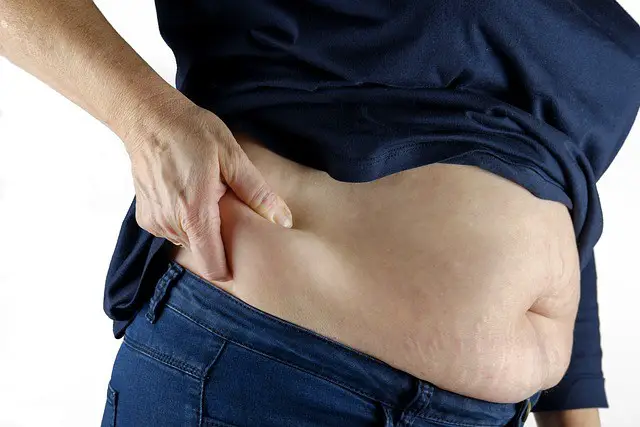
Does no weight loss also mean you are not losing fat? You are still burning fat even though the scale weight isn’t changing. This could be because of gaining more muscle mass which is heavier than fat mass. You can check your waist circumference and skinfold measurements to assess body fat loss on a plateau.
The Bottom Line
A weight loss plateau is normal and more common than most people would love to admit. Sometimes it is an indication that your body is in a good place, both mentally and physically. In such scenarios, worry not! Go back and review your weight goals and keep on choosing a healthy lifestyle. You don’t need to do anything to change you!
Your stall could also be due to other factors like lack of sleep, poor dietary choices, stress, or even hormonal imbalances. Do the needful to get back on track. But even as you make changes to break through the weight loss plateau, be patient with yourself. Don’t let your weight be the measure of your success!
Have you ever experienced a weight loss plateau in your journey? How long did it last before you broke it? What plateau break diet worked for you? We’d all love to hear from you!

